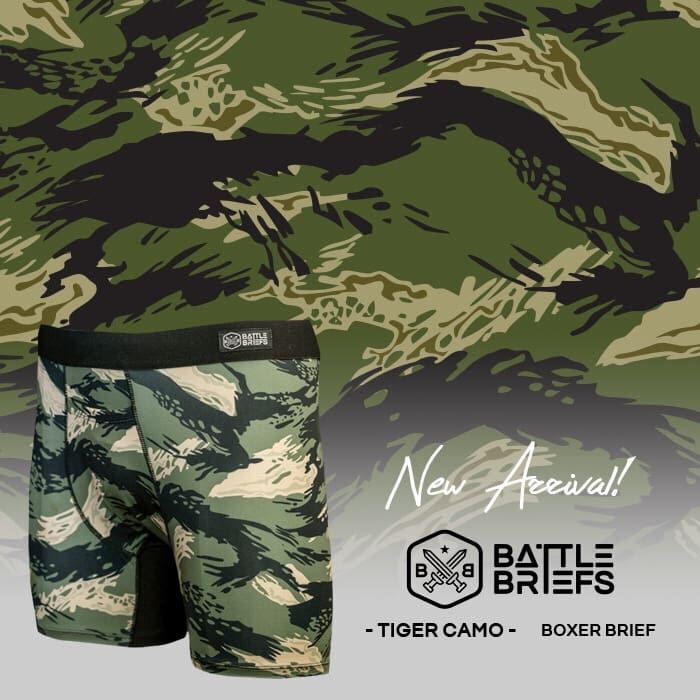
• Breathable
• 4-Way Stretch
• Seamless Flat Lock Stitch
• No Ride Design
• “Flip Top” Fly Opening
• Quick Dry Fabric
• Now in Tiger Camo
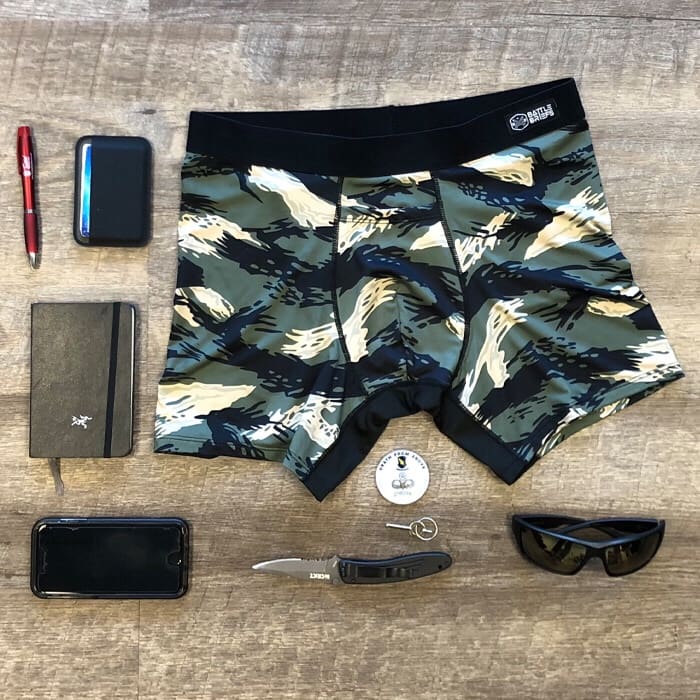
www.tacticaldistributors.com/collections/battle-briefs

• Breathable
• 4-Way Stretch
• Seamless Flat Lock Stitch
• No Ride Design
• “Flip Top” Fly Opening
• Quick Dry Fabric
• Now in Tiger Camo

www.tacticaldistributors.com/collections/battle-briefs
There’s something new brewing at Digital Concealment Systems, the company that launched the A-TACS Camo patterns. Original A-TACS AU released in 2009, A-TACS FG released in 2011, and A-TACS LE released in 2013 are being retired as their new X series of patterns have now been completed and are coming online to replace the three original “Legacy” patterns. The X line represents the conclusion of more than three years of development culminating with the release of new AU-X (Arid/Urban Xtreme) and FG-X (Foliage Green Xtreme). It also represents a new streamlined direction for the company itself. Not only have Camouflage Patterns evolved, the company ownership has also followed suit. The company has been re-organized with a new focus and is now run by Founder and Pattern Developer, Phil Duke and Clint Hoover, who previously served as A-TACS Spokesman, Business Development and Marketing strategist.

With 25 years serving in the United States Army as a US Army Ranger Medic, Special Forces Weapons Sergeant with Assaulter/Sniper assignments. Clint Hoover brings a wealth of experience not only into the day to day operation, he has also brought his real world experience into the development of the new enhanced line of camouflage patterns currently being introduced. “Our focus has historically been on the Special Operations community, this includes JSOC, Tier 1, SOF assets worldwide, further to that, Tactical Law Enforcement, Three Letter Agencies and OGAs” Hoover stated. “With the now complete X line of patterns, we have re-doubled our focus, and partnered with only like-minded gear and uniform manufacturing partners”, according to Hoover.
Likewise, many of the A-TACS Brand Partners are stepping up to the plate. For example, TRUSPEC and A-TACS Camo have partnered in the creation of a brand new uniform style exclusive to the A-TACS X line, that will make its debut at the 2019 SHOT Show. “This uniform will incorporate many of the features Special Operations teams are looking for in the highest quality Vat-Dyed NyCo fabric–and we will be delivering it at a price unheard of for a garment of this quality”, said Drew Sylvester, Director of Sales at TRUSPEC. This uniform will be available in four of the new A-TACS Camo patterns in early 2019.

During the on-going “War on Terrorism” and the ever-changing threat landscape, new innovations in tactical camouflage were born. With adversaries, in every geological hiding spot around the world, SOF must be able to adapt their appearance within areas of operation in short order. With the popularity and over-proliferation of some camouflage patterns currently in widespread use, A-TACS Camos’ sole purpose was to offer our nation’s Special Operators and Tactical Law Enforcement professionals the most advanced concealment available and reduce the possibility of “battlefield confusion”. “We have created six new patterns to enable Special Operations professionals to effectively blend into changing environmental scenarios. These patterns can easily be mixed and matched to any mission-specific geographical requirement by simply changing and intermingling uniform tops, bottoms and nylon gear in any variable combination of the three main colorways in the X line”, according to Duke. During the development of the A-TACS X line-up, careful consideration was given regarding the use of common color with variable ratios in all three patterns in the central line, consisting of A-TACS AU-X, A-TACS iX and A-TACS FG-X. “If you look back to the Special Forces, Recon Team, Seals and MAC-V-SOG projects, they truly took camouflage to the next level. Mixing camo uniforms and gear further breaks up the human silhouette. This has continued up to current day, looking at recent operations around the world and now, through years of research and development, we have taken that concept to the next level,” Hoover stated.
The centerpiece of this concept is A-TACS iX (Intermediate Xtreme), introduced in 2015, with the bookends of A-TACS AU-X (Arid/Urban Xtreme) and A-TACS FG-X (Foliage Green Xtreme) being introduced on uniforms and gear at the 2019 SHOT Show in Las Vegas. Rounding out the line-up is A-TACS LE-X (Law Enforcement Xtreme), A-TACS (Ghost) Grey, and A-TACS AT-X (Arctic Tundra Xtreme). This family of concealment solutions provides end-users with a diverse choice of modular clothing to facilitate rapidly changing mission criteria.

“It is our mission to improve the design, advance printing capabilities and concealment effectiveness of our camouflage patterns. Advanced capabilities include: a full effective camouflage system, nocturnal diffusion of light, optics perception, Near Infra Red, Thermal Threat Solutions and the cumulative global experiences of special operations soldiers’ usage of camouflage,” According to Hoover. “Stay tuned, the best is yet to come!”
For information on A-TACS fabrics, Trims, Kydex, hydrographic’s and vinyl’s. Go to www.a-tacs.com
Chaco has released a limited run of camouflage sandals.

There are several styles available but they’re a limited run. The patterns are woodlandesque, but make the point.
www.chacos.com/US/en/limited-edition-collections
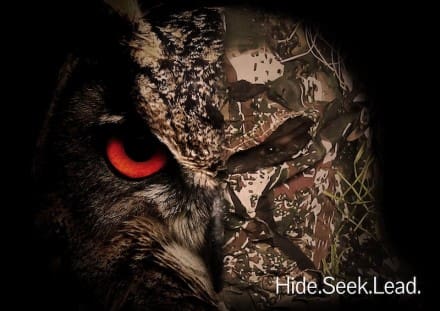
Have you seen everything? That’s not possible at all. These guys are so well camouflaged that you can’t see them. Only we can see them – and introduce them to you: NONVIDE is the name of the new name, specializing in the best camouflage. So, what you should be able to see …
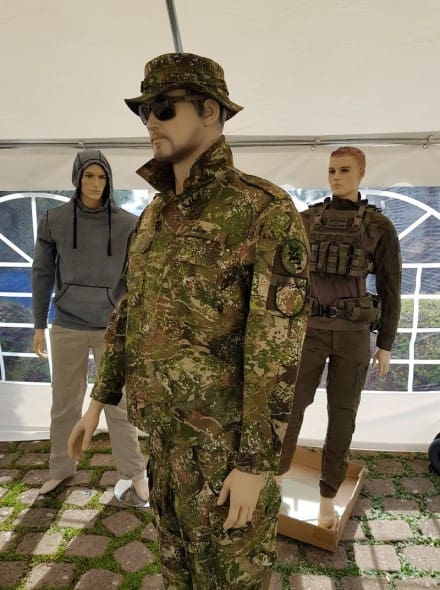
NONVIDE comes from Berlin and the makers have been seen before. It’s the people behind TACTICALTRIM, too. On board: CONCAMO, the new German camouflage pattern, developed by Matthias Bürgin. The picture shows the Leo Köhler KSK set, which we had already introduced in the review, which fits quite well where it is right now. It’s also an open secret that authority is CONCAMO’s target group. We wouldn’t be surprised if we heard good news soon. HERE the interview with the developer about CONCAMO.
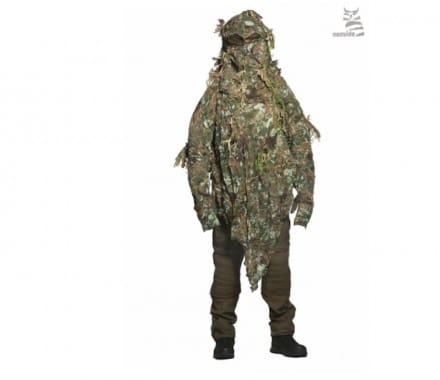
Brand new and fresh and hardly visible – unless you put it on a white background – is the Ultra-Light Basic quick camouflage poncho presented by NONVIDE . Here we see CONCAMO in a second application, after the first uniform of Leo Köhler. HERE you can find all information about this new product.
And if we take a look at the description, we can also see that CONCAMO will soon be split into four different patterns on certain dates:
o Concamo® Green (available)
o Concamo® Fall (from Q4/2018)
o Concamo® WinterForest (from Q4/2018)
o Concamo® Urban (from Q1/2019)
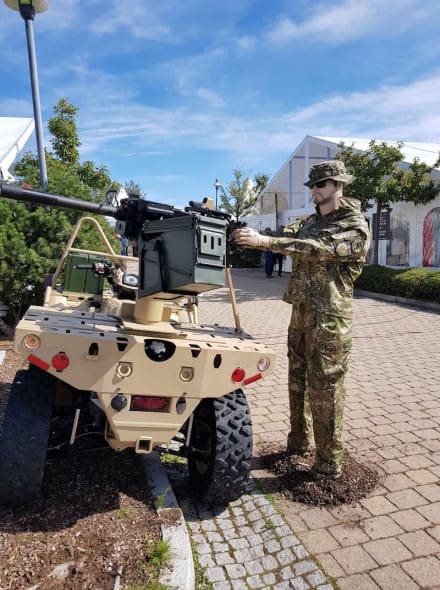
CONCAMO at the machine grenade launcher in action, the man is very hard on it. And look at his feet: it is trench warfare …
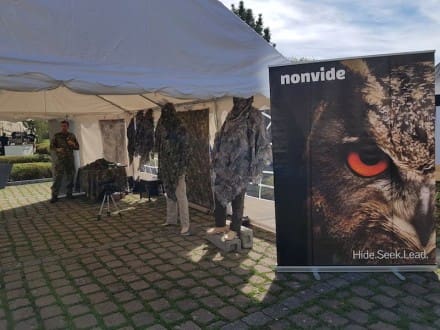
A quick look into the tent shows: NONVIDE has a lot to show on a currently running symposium at Calw, which doesn’t want to be named: all camouflage stuff. And let’s call it „KSK Symposion“. HERE you can get NONVIDE fresh on Facebook. Give them a Like!
NONVIDE: www.nonvide.com
SPARTANAT: www.spartanat.com
This story was provided to us by our friends at the German language website Spartanat. It has been translated from the original German to English.
Israeli tactical gear supremos Agilite® have made a Limited Edition of their RAPTOR Ops Core BUMP helmet cover in PenCott-GreenZone® at an end-user group’s request. Overruns of this unique cover can be purchased at agilitegear.com/products/raptor-ops-core-fast-bump-polymer-helmet-cover-1
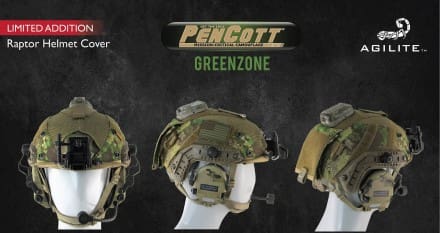
One of Agilite’s specialties is manufacturing precision tactical helmet covers for SOF units and LE Agencies that meet their specific operational requirements and accessory sets, as well as designing and manufacturing covers for some of the largest helmet manufacturers in the Industry.
The RAPTOR helmet cover, as well as the rest of Agilite’s line-up can be produced in any of the PenCott patterns for Retailers and Dealers who would like to add this item to their line-up as regular stock – contact Agilite for further details.
Follow Agilite on Instagram @agilitetactical and Agilite Tactical Gear on Facebook for all their updates and sneak peeks.
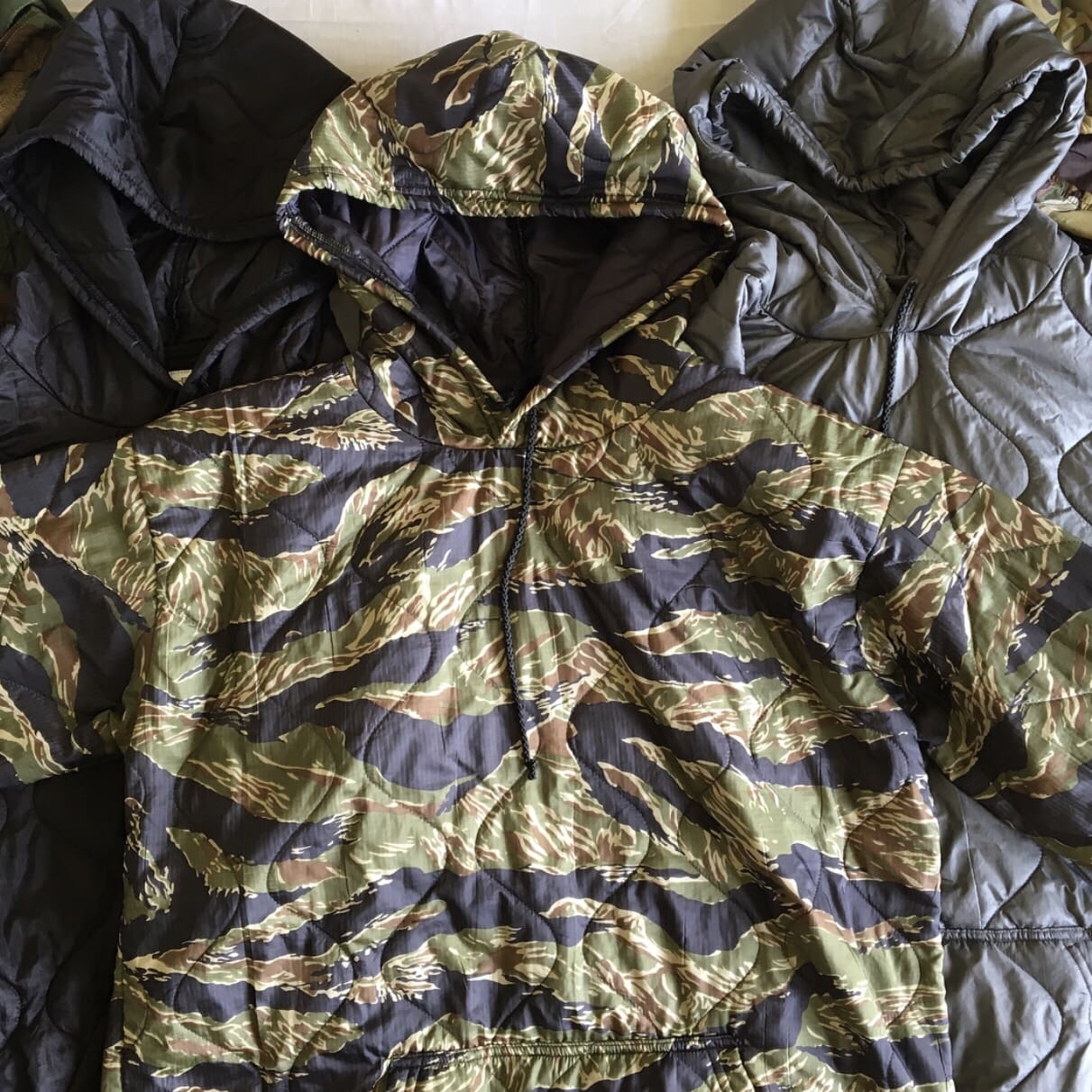
Originally made from repurposed poncho liners, these hoodies from Perseverance Survival feature a kangaroo pocket at the waist. Over the past year, they’ve introduced new colors including Grey and this Tigerstripe number I couldn’t pass up.
10% of all sales from this produce will be donated to the Recon Sniper Foundation (RSF). If you wish to donate more of get further details about the RSF please visit their website at www.reconsniperfoundation.org
perseverancesurvival.com/bags/tiger-stripe-hoodie
This is what is referred to as, “Fake News.”
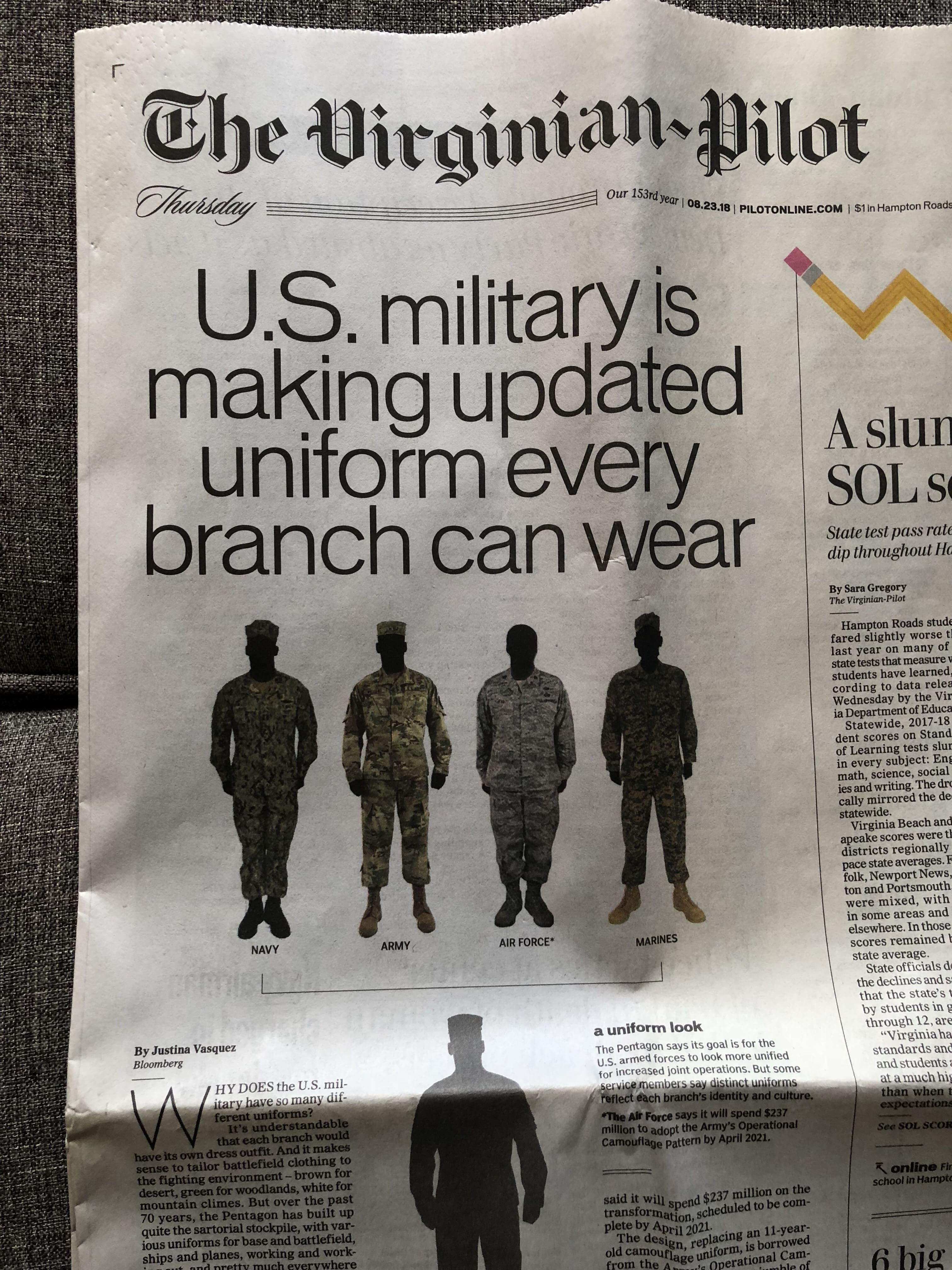
The Virginia Pilot is the local paper for the Hampton Roads region, an area which boasts more than a dozen military facilities, representing every US service. This was their headline Thursday. The problem is, it’s not true.
While the USAF is in the process of replacing the Airman Battle Uniform in the Digital Tigerstripe Pattern with the Army Combat Uniform in the Operational Camouflage Pattern, the USMC remains in their unique utility Uniform in both desert and woodland patterns. Additionally, the Navy has adopted a Woodland camouflage pattern for its Navy Working Uniform which shares a geometry with the Marine pattern, but unique colors. As you can imagine, the NWU features different cut than the Army/Air Force as well as Marine utility uniforms.
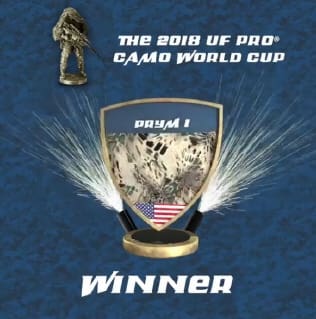
After facing three gruelling rounds of closely-contested ‘camo clash matches’, Prym1 Camo, a new breed of non-directional hybrid camouflage, comes of age defeating the more established patterns of MultiCam (USA), PenCott™ Greenzone (UK), Flecktarn (GER) and Vegetato (ITA) to be crowned the most popular camouflage pattern of UF PRO®’s 100,000-strong social media fan base.
The Prym1® patterns are a range of camouflage colourways for multiple environments, that have been professionally designed with the idea of allowing you to move through various terrains by utilizing the depth, colours, shadows, highlights and organic shapes found on predators in the wild. The Prym1® tactical camo patterns have been developed for personnel that want to be concealed and blend into their surroundings at all times, whether on the move or from a hide site.
What does this mean for Prym1 Camo?
Obviously backed by an army of passionate supporters who are demanding a sense of change from the more established, traditional camouflage patterns in the tactical world, the new-age Prym1 Camo pattern will soon be available as a limited edition piece in UF PRO®’s most popular collection, the Striker BDU.
For more information regarding licensing, fabric information and decoration contact: richard@prym1camo.com